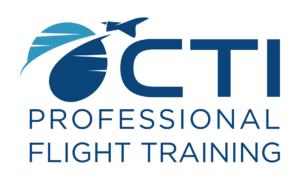Careers in Flight: A day in the life of a commercial pilot
A day in the life of a commercial pilot
Ever wondered what a day in the life of a commercial pilot looks like? With many of our flight students going on to fly professionally, here’s an insight into the kind of working day they can expect:
The night before
FAA regulations state that a commercial pilot has to have a rest period of at least ten hours before every flight and this is most likely to be at an airport hotel.
The term ‘rest time’ is an interesting one; it doesn’t mean ‘sleep time’, but means the time between a pilot’s last landing and next take-off. Therefore, it might include the time it takes for a flight to unload and the time it takes for a pilot to make it from the aircraft to the hotel. However, the FAA rule is designed for a pilot to get up to 8 hours of uninterrupted ‘sleep time’, preparing them well for the next day.
The morning of the flight
The average pilot works a 13-hour day on duty, so an early start is likely! Once up and ready, the pilot will need to check out and make their way to the airport.
Here, they go through security just like their passengers do (nobody’s above the rules!). Airline staff usually have a separate queue, though, which is probably why you haven’t seen them in line with you before. This means they can move more quickly through the procedures.
Once the pilot has found their gate, they will receive their paperwork from the gate agent. This will include all the essential information they need for the flight, from the flight plan and weather to details of the aircraft’s weight.
Pre-flight preparation
Once in the cockpit, the pilot can begin to make all the necessary pre-flight checks – just like you do in your training! A body-check is also needed to ensure there are no problems, and this is usually done by the co-pilot. Once they are sure there are no leaks, no damage and no loss of tire pressure, they can return to the cockpit to program the Flight Management System.
The pilot might also take the chance to brief the crew on safety procedures before passengers board the plane.
Take-off
As soon as those doors close, the pilot will wait for further instruction from the control tower. This will include any directions to the runway, as well as that all-important clearance for take-off.
Once in flight, the pilot has three top priorities: to supervise the aircraft’s systems to ensure everything is working to plan, to note nearby airports in case they need to make an unexpected landing, and to prepare for landing.
Back down to earth
As you know, every landing is a critical moment for a pilot, and it’s important they’re well prepared. They will have received all the weather details and wind speed from their destination airports to make the right calculations for a successful landing, before bringing the aircraft safely back to earth. They can then park at the gate for de-boarding.
And repeat…
If a pilot is making a series of short flights in a day, they can repeat this process over and over in one shift. Current rules state a pilot cannot exceed eight hours of flying time in a 24-hour period, so once they’ve reached their limit, their day must come to an end.
Then it’s back to a hotel to rest, in preparation to do it all again tomorrow!
If this insight into a day in the life of a commercial pilot has got you itching to fly, why not get in touch? Learn to fly at CTI Professional Flight Training, and you’ll be ready for your dream job by the end of your course!

